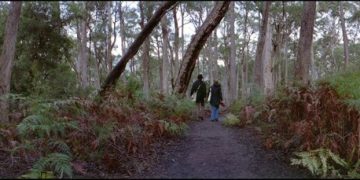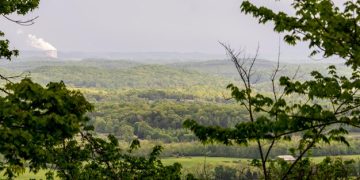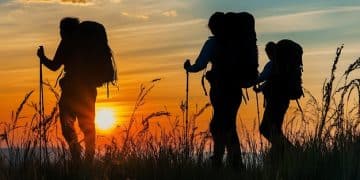National Park Backpacking: Your Comprehensive Guide to Multi-Day Trips

National park backpacking involves planning and executing multi-day hiking trips in national parks, requiring careful preparation, navigation skills, and Leave No Trace principles to ensure a safe and enjoyable wilderness experience.
Embarking on a national park backpacking adventure offers unparalleled opportunities to immerse yourself in nature’s splendor. This comprehensive guide will provide you with the knowledge and insights needed to plan a safe and unforgettable multi-day trip.
Planning Your National Park Backpacking Trip
Planning is the cornerstone of a successful backpacking trip in a national park. Thorough preparation ensures you’re equipped to handle the challenges and fully enjoy the experience.
Choosing the Right Park and Trail
Selecting the ideal national park and trail is crucial. Consider factors like your experience level, desired scenery, and the time of year.
- Research Park Regulations: Understand permit requirements, camping restrictions, and any specific rules for your chosen park.
- Assess Trail Difficulty: Match the trail’s elevation gain, distance, and terrain to your fitness level and backpacking experience.
- Check Weather Conditions: Be aware of potential weather hazards and pack accordingly. Mountain weather can change rapidly.
Ultimately, the best park and trail will depend on your personal preferences and abilities. Prioritize safety and choose an experience that aligns with your skill set.
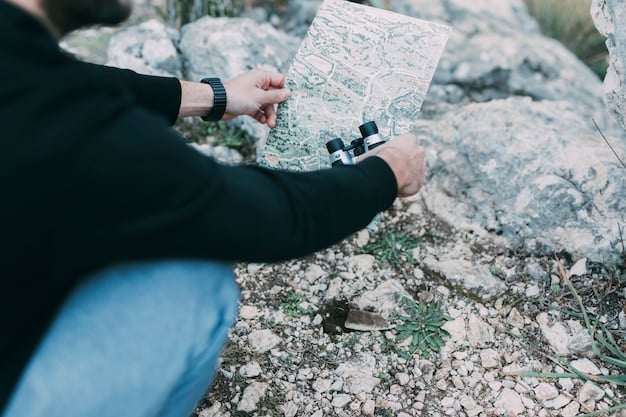
Essential Backpacking Gear for National Parks
Having the right gear can make or break your backpacking trip. Focus on lightweight, durable equipment that will keep you comfortable and safe in the backcountry.
The Big Three: Backpack, Tent, and Sleeping Bag
These are the most important pieces of gear you’ll carry. Invest in high-quality items that fit well and perform reliably.
- Backpack: Choose a pack with adequate volume for your gear (50-75 liters is common) and a comfortable suspension system.
- Tent: Opt for a lightweight, weatherproof tent that is easy to set up and provides adequate protection from the elements.
- Sleeping Bag: Select a sleeping bag with a temperature rating appropriate for the expected nighttime temperatures. Consider down or synthetic insulation.
Selecting appropriate gear can significantly enhance comfort and safety during outdoor adventures. Ensuring the equipment is both lightweight and functional is essential for any trip.
Navigation and Safety Skills
Navigating in the backcountry requires skill and preparation. Don’t rely solely on technology; learn traditional navigation techniques.
Before setting out, familiarize yourself with the area by studying maps and understanding compass bearings.
Mastering Map and Compass Navigation
Knowing how to use a map and compass is essential for staying on course.
- Learn to Read Topographic Maps: Understand contour lines, elevation, and terrain features.
- Practice Taking Bearings: Use a compass to determine the direction to a distant landmark or waypoint.
- Stay Aware of Your Surroundings: Regularly check your position on the map and compass to ensure you’re on the right track.
These skills can be invaluable if your electronic devices fail, ensuring you can safely navigate back to your starting point.
Food and Water Planning for Backpacking
Adequate nutrition and hydration are essential for maintaining energy levels and preventing health issues on a multi-day backpacking trip.
Calories and Hydration
Calculating your caloric needs and water requirements before you leave prepares you for the physical demands of the trail.
Understanding how to manage these resources is crucial for a successful trip.
- Estimate Caloric Needs: Plan for approximately 2,500-4,500 calories per day, depending on your activity level and metabolism.
- Pack Lightweight, High-Calorie Foods: Choose foods like nuts, dried fruit, energy bars, and dehydrated meals that are easy to prepare.
- Carry Enough Water or a Water Filter/Purifier: Ensure you have a reliable source of clean drinking water.
Effective budgeting of food and water not only ensures the health and safety but also contributes to the sustainability of outdoor journeys by minimizing environmental impact.
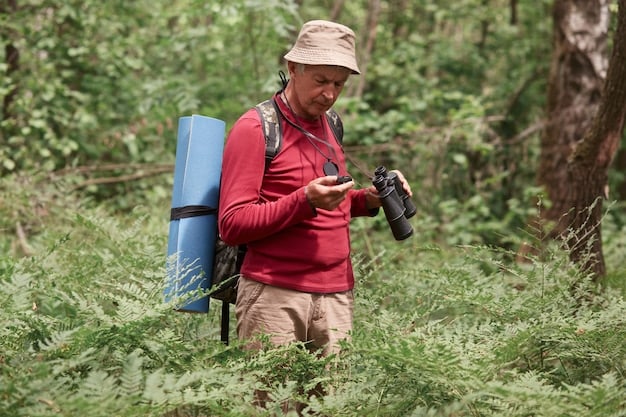
Leave No Trace Principles in National Parks
Protecting the natural environment is a shared responsibility. Adhere to the Leave No Trace principles to minimize your impact on the wilderness.
These principles guide ethical and sustainable outdoor practices, ensuring future generations can enjoy these pristine areas.
Following Key Principles
Understanding and implementing Leave No Trace is vital for preserving the integrity of national parks for future exploration.
- Pack It In, Pack It Out: Carry out everything you carry in, including trash, food scraps, and toilet paper.
- Minimize Campfire Impacts: Use established fire rings or stoves for cooking, and keep fires small and contained.
- Dispose of Waste Properly: Bury human waste in a cat hole at least 200 feet from water sources, trails, and campsites.
By consistently applying these guidelines, backpackers play an essential role in safeguarding the environment.
Dealing with Wildlife Encounters
Encountering wildlife is a possibility in national parks. Learn how to react responsibly to minimize risks to both yourself and the animals.
Each species presents unique challenges and requires specific responses to ensure safety and minimize disturbance.
Preventative Measures
Taking steps to avoid interactions altogether is the best approach.
Understanding these preventative measures is the best way to have a safe trip.
- Store Food Properly: Use bear-resistant containers or hang food from a tree to prevent attracting animals to your campsite.
- Make Noise While Hiking: Alert wildlife to your presence by talking, singing, or using a bell.
- Keep a Safe Distance: Observe animals from afar and never approach or feed them.
These practices are critical for preventing negative interactions that could harm both humans and wildlife, and contribute to maintaining the natural balance of the ecosystem.
Emergency Preparedness and First Aid
Despite careful planning, emergencies can happen in the backcountry. Be prepared to handle injuries, illnesses, and unexpected situations.
Having a well-stocked first-aid kit and knowing how to use it can be life-saving.
Essential First Aid Skills
In emergencies, these can be the difference between a small injury and a life-altering event.
This preparation not only safeguards personal health but also empowers them to assist others in times of need.
- Carry a Comprehensive First-Aid Kit: Include bandages, antiseptic wipes, pain relievers, blister treatment, and any personal medications.
- Learn Basic First-Aid Techniques: Know how to treat wounds, sprains, fractures, and other common injuries.
- Carry a Communication Device: A satellite phone or personal locator beacon (PLB) can be used to call for help in remote areas.
Ensuring you are ready for emergencies can make all the difference.
| Key Point | Brief Description |
|---|---|
| 🎒 Gear Essentials | Prioritize lightweight, durable equipment for comfort and safety. |
| 🗺️ Navigation Skills | Master map and compass; don’t solely rely on tech. |
| 💧 Food & Water | Plan adequate calories and hydration for the long trip. |
| 🐻 Wildlife Safety | Properly store food; make noise while hiking to avoid encounters. |
Frequently Asked Questions
▼
The best time varies depending on the park and elevation. Generally, late spring through early fall offers the most favorable weather conditions. Check specific park websites for details.
▼
Many national parks require permits for overnight backpacking trips. Visit the park’s website or Recreation.gov to apply for permits in advance. Popular trails often have lotteries.
▼
Stay calm, avoid direct eye contact, and slowly back away. Never run. If the bear approaches, make yourself look large, make noise, and use bear spray if necessary.
▼
Water needs vary depending on factors like temperature, exertion level, and individual physiology. A general guideline is to carry at least 2-4 liters of water per day, or have a reliable water purification method.
▼
Your kit should include bandages, antiseptic wipes, pain relievers, blister treatment, gauze pads, adhesive tape, moleskin, and any personal medications you require.
Conclusion
Embarking on a national park backpacking trip is an incredibly rewarding experience. By carefully planning, packing the right gear, mastering essential skills, and adhering to Leave No Trace principles, you can ensure a safe, enjoyable, and memorable adventure in the great outdoors.

